Comments / Questions (26)
![]() Jacob wrote:
Jacob wrote:
Hi, I've run into a problem with the first size in brackets in the pattern for the front piece. I've got 122 stitches like it says but the number of stitches it says to work for each square adds up to 128 (and that's before increasing for M1). Should I redistribute the stitches so there are 30 per square (not counting the increase for M1/M2) or is having some wider than others important? Otherwise, awesome pattern. Thanks!
02.09.2023 - 10:38DROPS Design answered:
Dear Jacob, there seems to be a typo with the numbers; you should check the number counts for Ladies M size for the distributions of stitches (the other size with 122 stitches) and progress from there. We will correct it as soon as possible. Happy knitting!
03.09.2023 - 22:51
![]() Camilla wrote:
Camilla wrote:
Ja jag använder karisma med korrekt stickfastighet. Hälften av garnet är slut efter en resår och två rutor . Det ska vara åtta rutor totalt och en resår till . Samma mängd garn anges för grönt som bara ska vara 6 rutor och inte heller till resår. Verkar orimligt. Har dessvärre beställt för lite då jag utgick från instruktionerna.
15.03.2023 - 11:26
![]() Camilla wrote:
Camilla wrote:
Stämmer verkligen garnförbrukningen? Den mörkare blå kommer inte räcka till både resår och fyra rutor på både fram- och bakstycke!
13.03.2023 - 16:50DROPS Design answered:
Hej Camille, vi har ikke hørt at der ikke skulle være nok.... Strikker du i DROPS Karisma og holder du strikkefastheden på 20 masker på 10 cm?
15.03.2023 - 10:22
![]() Agnethe ONeill wrote:
Agnethe ONeill wrote:
I opskriften skriver i garnforbrug i de forskellige farver. Der er ikke skrevet noget i opskriften om hvilke farver de forskellige mønstre (firkanter) er strikket i. Det kan da ikke være meningen at man skal gætte , med fare for fejl og deraf garnmangel i visse farver.
27.12.2022 - 21:30DROPS Design answered:
Hej Agnethe, vi skal få lagt de forskellige farver ind i diagrammet - tak for info :)
03.01.2023 - 12:28
![]() Karen Livingston wrote:
Karen Livingston wrote:
Is there errata in the front neckline shaping? It says to wait to bind off until the last five rows, but that would make a very shallow neckline and does not appear to be what’s shown in the picture.
27.10.2022 - 12:36DROPS Design answered:
Dear Mrs Livingstone, it should have been cm instead of row, ie when 5 cm remain before end of the square, you cast off the middle stitches for neck - pattern will be edited, thanks for noticing. Happy knitting!
27.10.2022 - 13:44
![]() JP wrote:
JP wrote:
Drops 40 7 pattern. Instructions for sleeves say decrease 6 stitches mid underarm and then dec 6 sts. each side on every other row to shape sleeve cap. Do I decrease just 6 sts underarm and then 6 sts at each end every other row for sleeve cap or do I decrease 6 sts each side underarm then shape sleeve cap?
10.03.2022 - 15:29DROPS Design answered:
Dear JP, you should cast off (not decrease) 6 sts mid under sleeve (= 3 sts at the end of the round + 3 sts at the beginning of next round), then work in rows casting off 6 sts at the beginning of next 8 rows (4 times on each side). Happy knitting!
10.03.2022 - 18:22
![]() Jude wrote:
Jude wrote:
I am knitting drops 40 7 pattern and have reached the instruction to decrease 1 stitch from each end of the row. I’ve done this and according to the pattern I should have 132 stitches left but, because of the 12 extra stitches in M1, I actually have 144 stitches.
30.12.2021 - 17:36DROPS Design answered:
Hi Jude, when you work M.1 inc number of sts to 42, on the row stocking st after M.1 dec to the number of sts required for next square. Repeat for M.2, adjust number of sts on 1st row in M.2 and adjust number of sts again at the end of M.2. Happy knitting!
30.12.2021 - 18:37
![]() JP wrote:
JP wrote:
Hello, I'm sure the finished article measurements for pattern number 40-7 are given in the pattern somewhere but all I can find are S-M-L for women and SM /ML for men. Please could you help me find the actual measurements? Thank you in advance
13.12.2021 - 12:15DROPS Design answered:
Dear JP, correct, the finished measurements are in the chart for each of the 5 sizes - read more about the chart here. Happy knitting!
14.12.2021 - 07:28
![]() JP wrote:
JP wrote:
Are there written instructions for the patterns in individual squares or are there only charts available? UK knitters are generally more used to written instructions rather than charts.
12.12.2021 - 11:37DROPS Design answered:
Dear JP, unfortuantely we do not have written out instructions, not only because our patterns are available on many languages, but also, because we believe that with charts you not only see the very next step (stitch) as with written out patterns), but the larger picture, as how rows and stitches relate to each other en lagre. However, we have a lesson on how to read diagrams here. Happy Stitching!
13.12.2021 - 04:06
![]() Helga Henn wrote:
Helga Henn wrote:
Völlig unbrauchbare, konfuse Anleitung, sogar bei den unterschiedlichen Farben. Schade, das ist so eine schöne Jacke.
07.11.2021 - 16:37
Textures in Blue |
|||||||||||||||||||||||||
|
|
|||||||||||||||||||||||||
DROPS ladies or men’s jumper with square pattern in “Karisma”.
DROPS 40-7 |
|||||||||||||||||||||||||
|
Knitting Tension: 20 sts x 26 rows on needle size 4 mm in pattern = 10 x 10 cm Rib: *K1, P1*, repeat from *-*. Bobble: Work 4 sts in one st. Work 4 rows stocking st on these 4 sts. Now lift the first, then the second, then the third st over the fourth st. Squares: Each square = height 14-15-15 (16-16) cm. Work 1 row stocking st between each square. In M.4 for ladies size M/L: work the outermost 3 sts towards side in M.6 (to avoid half pattern at side). Pattern: See diagram. The diagram shows the pattern from the RS side. Colours: Square 1: M.3 with colour 54, beige Square 2: M.1 with colour 51, light blue Square 3: M.4 with colour 50, green Square 4: M.5 with colour 03, light beige Square 5: M.4 with colour 03, light beige Square 6: M.2 with colour 37, blue Square 7: M.5 with colour 54, beige Square 8: M.3 with colour 37, blue Square 9: M.3 with colour 37, blue Square 10: M.4 with colour 51, light blue Square 11: M.1 with colour 03, light beige Square 12: M.5 with colour 50, green Square 13: M.5 with colour 50, green Square 14: M.3 with colour 54, beige Square 15: M.2 with colour 37, blue Square 16: M.4 with colour 51, light blue Front piece: Numbers in ( ) refer to Men’s version. Cast on 97-98-102 (102-108) sts on needle size 2.5 mm with blue and continue as follows: Ladies: 3 cm stocking st, P 1 row (= folding edge, measure piece from here), 3 cm stocking st, Men’s: 6 cm Rib. Change to needle size 4 mm and inc 20-24-26 (20-26) sts evenly on first row = 116-122-128 (122-134) sts (incl 1 edge st each side for seam). Continue in square pattern, first row = RS, as follows: 1 edge st, 27-30-33 (33-36) sts of M.3, 30-30-30 (30-30) sts of M.1, 30-30-30 (30-30) sts of M.4, 27-30-33 (33-36) sts of M.5, 1 edge st. Continue in pattern following the diagram, but on first row of M.1 and M.2 inc 11 and 12 sts evenly on the sts in square , so that these squares are worked on 41 and 42 sts respectively. Remember the knitting tension. When piece measures 32-36-35 (37-40) cm cast off 1 st each side = 114-120-126 (120-132) sts. When 5 cm are left of the last square, piece measures approx 54-58-58 (61-65) cm cast off the middle 28-30-30 (36-38) sts for neck plus the 12 extra sts on M.2. Now cast off to shape the neckline on every other row: 2 sts 1 time, 1 st 1 time. Cast off remaining sts on shoulder after the last square, piece measures approx 59-63-63 (66-70) cm. Back piece: Cast on and work as front piece. When 2 cm left of the last square in diagram, piece measures approx 57-61-61 (64-68) cm cast off the middle 34-36-36 (42-44) sts plus the 12 extra sts on M.2 and dec 2 sts on neckline on next row. Cast off as described for front piece. Right sleeve: Knitted in the round on double pointed needles. Cast on 48-48-48 (48-52) sts on double pointed needles size 2.5 mm with blue and continue for Hem/Rib as described for front and back piece. Change to needle size 4 mm and beige continue in M.5, at the same time inc 4-6-6 (8-8) sts evenly on first round = 52-54-54 (56-60) sts. At the same time after the Hem/Rib, inc 2 sts mid under arm a total of 28-27-29 (30-30) times as follows: Size lady S + M, men’s size S/M + M/L: on every 3rd and 4th * round alternately Size lady L: on every 3rd = 108-108-112 (116-120. When piece measures 44-43-43 (50-49) cm cast off 6 sts mid under arm and complete sleeve back and forth on needle. Dec to shape the sleeve cap each side on every other row: 6 sts 4 times. Cast off when sleeve measures 48-47-47 (54-53) cm. Left sleeve: Work as right sleeve, but in light blue instead of beige. Assembly. Sew shoulder seams. Pick up approx 100-106 sts round the neck on needle size 2.5 mm with light blue and continue as follows: ladies: 6 cm Rib, but after 5 cm change to blue, cast off. Men’s: 6 cm Rib, but after 3 cm change to blue, cast off, fold double towards WS and fasten. Set in sleeves, armhole = 27-27-28 (29-30) cm, and sew side and sleeve seams. Ladies: fold hems double towards WS and fasten. |
|||||||||||||||||||||||||
Diagram explanations |
|||||||||||||||||||||||||
|
|||||||||||||||||||||||||
 |
|||||||||||||||||||||||||
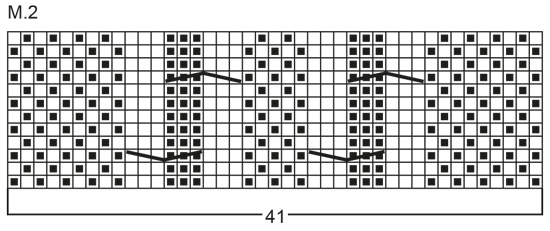 |
|||||||||||||||||||||||||
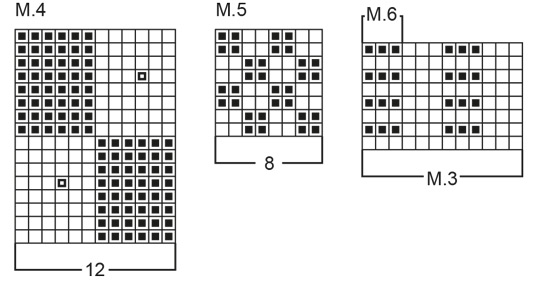 |
|||||||||||||||||||||||||
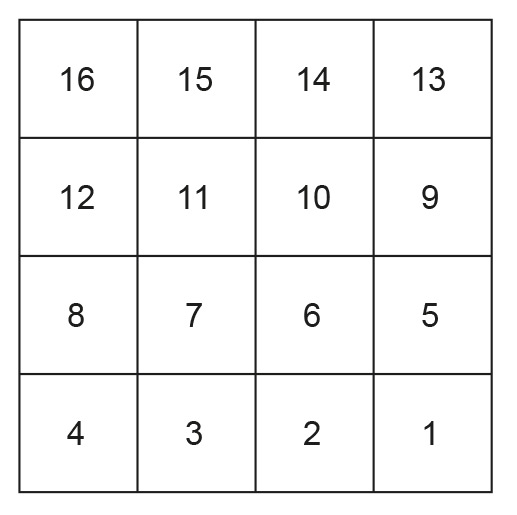 |
|||||||||||||||||||||||||
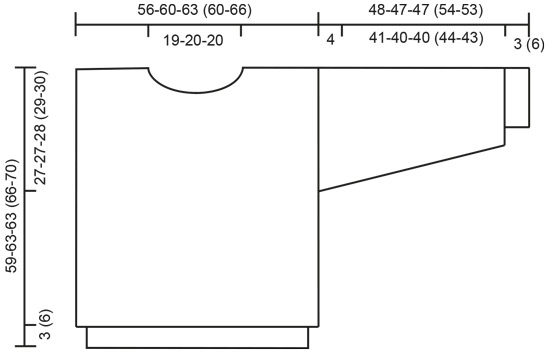 |
|||||||||||||||||||||||||
Have you finished this pattern?Tag your pictures with #dropspattern or submit them to the #dropsfan gallery. Do you need help with this pattern?You'll find 21 tutorial videos, a Comments/Questions area and more by visiting the pattern on garnstudio.com. © 1982-2026 DROPS Design A/S. We reserve all rights. This document, including all its sub-sections, has copyrights. Read more about what you can do with our patterns at the bottom of each pattern on our site. |
|||||||||||||||||||||||||













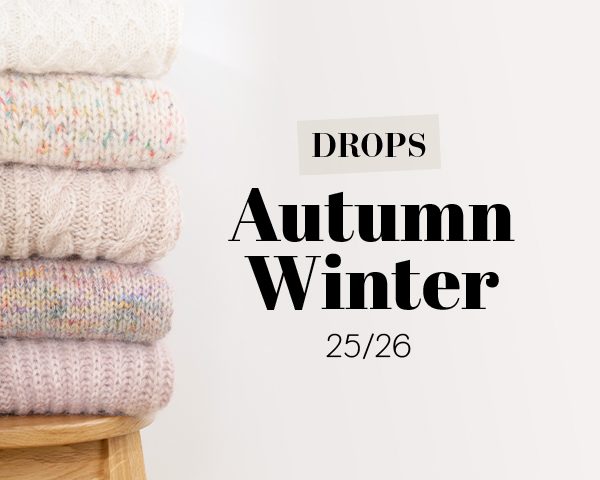

















































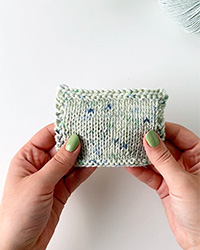

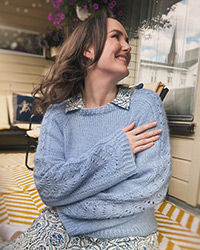

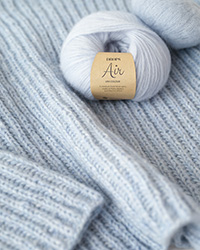
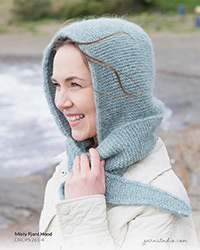
Post a comment to pattern DROPS 40-7
We would love to hear what you have to say about this pattern!
If you want to leave a question, please make sure you select the correct category in the form below, to speed up the answering process. Required fields are marked *.